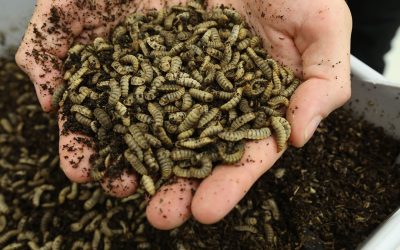Approaches to delivering net zero

The UK Government needs to do more to fall in line with the Intergovernmental Panel on Climate Change over farm sequestration of greenhouse gases.
At present, although the government measures gross emissions of nitrous oxide, methane and carbon dioxide on farms, it does not take into account gross sequestration – the sum of all new carbon lock up in soils and trees.
While the IPPC recognises this as essential to achieve net zero by 2050, the government currently says this is too hard to measure.
UK: 2 carbon markets
Professor John Gilliland, Director of Agriculture and Sustainability at Devenish and Professor of Practice in Agriculture at Queens University, Belfast, said for him it was not so much a case of moving to net zero emissions but looking at the role and opportunity to increase carbon stocks on farms.
Speaking at the Institute of Agricultural Management annual meeting in London last week, Gilliland said there were currently 2 markets for carbon in the UK:
The compliance market covering emissions trading in the energy sector where prices were approximately £65/tonne of CO2 equivalent
The voluntary market, open to the land-based sector, where prices were just £15/tonne of CO2 equivalent: “Where is the equality in that,” he asked delegates.
Australia: Carbon credits
But in Australia, a carbon credit from power generation is worth £15/tonne while for forestry it is £21/tonne and for soil it has been between £25-36/tonne in recent weeks, showing that soil sequestration is now getting its proper recognition.
Compliance vs Voluntary markets
The difference, he argued, was due to the different structures being used. The compliance market uses one strict measuring, reporting and verification (MRV) protocol while the voluntary market has multiple protocols working to different standards and the carbon price is discounted.
“There are too many knowledge gaps in changes in carbon stocks on farms, predominantly in soil under grass and in trees and hedges,” he told delegates.
Ireland: Woodland & hedges
However, Gilliland through his work with Devenish has been creating a baseline of carbon stocks based on a 185ha grassland farm with woodland and hedgerows in the Republic of Ireland. Using aerial LIDAR surveys, he has been able to calculate biomass density in woodland and hedges and the farm’s sequestration potential.
Grant support
Results from the study led to grant support from the European Commission and the Northern Ireland Department of Agriculture, Environment and Rural Affairs (DAERA) to involve accelerating 7 farms towards net zero: “It’s delivering positive change by empowering farmers with gross emissions, gross sequestration and net carbon positions, soil fertility information and nutrient and pesticide run off risk maps.”
This is turn has led to £45m of support over 4 years from DAERA for the Northern Ireland Soil Nutrient and Health Scheme, which is baselining every field, tree and hedge in Northern Ireland, including the use of aerial LIDAR surveys, and has had backing from 95% of farmers. When repeated every 5 years it will at the Province level measure credibly change on farm.
3 important areas
Phil Jarvis, chairman of Albanwise Farming Ltd, which owns as tenants and landlords sugar beet, maize, potatoes across Norfolk and Yorkshire, said to get to net zero it was important to look at 3 areas, setting annual reduction targets accordingly:
1. Reductions
- Energy
- Transport
- Fuel Use
- Waste
2. Farm specific reductions
- Cultivations
- Fertiliser Use
- Machinery
3. Insetting
- Organic matter
- Woodland
- Agroforestry
- Hedges
- Woodland
Framework needed
Emily Norton, head of rural research at land agents Savills, said the government needed to provide a framework for delivery food and natural capital targets. She urged farmers to create baselines, stack enterprises, quintuple income streams and re-invest to deliver resilience.
“That might include producing crops and livestock, sinking carbon, providing agri-forestry services or delivering water management for water companies, which might attract government investment.” Government also needed to demand baselines and focus on services rather than capital.








